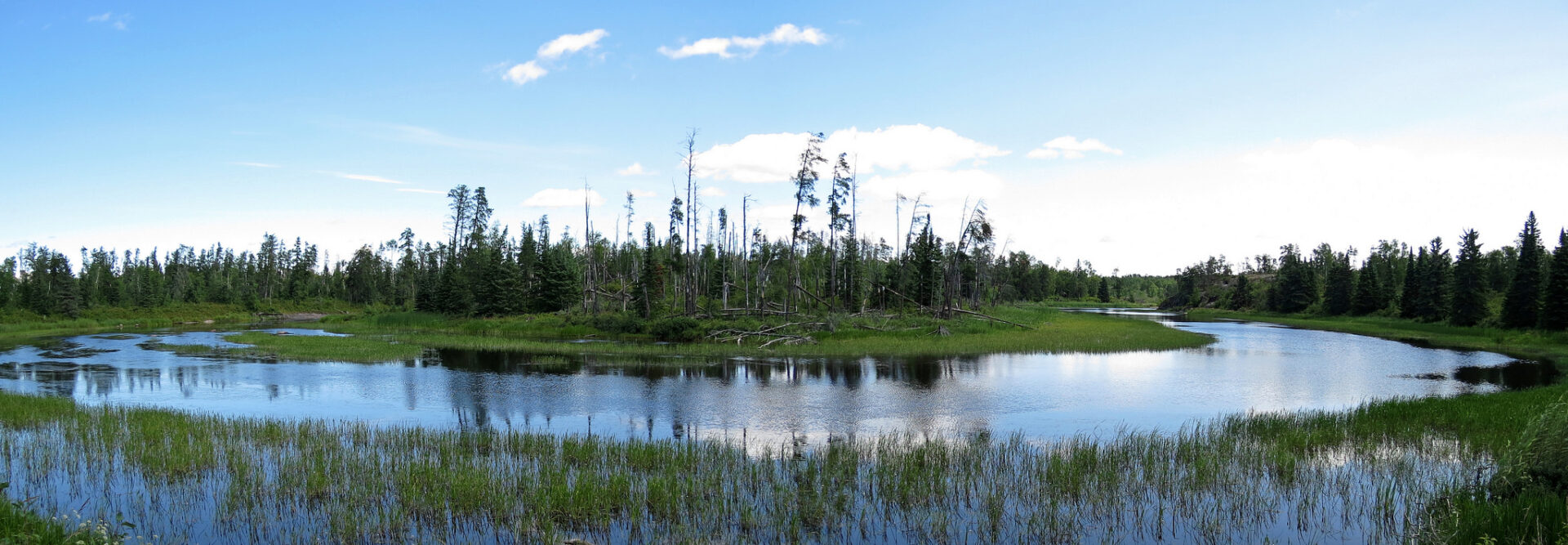At 23 years old, Ontario’s Environmental Bill of Rights, 1993 is in serious need of reform to bring it up to speed with legal developments in environmental law in Canada and abroad. Like a palm pilot or a flip phone, it was cutting edge when it first came out, and it still does many of the basic things one would expect from an EBR. But ultimately, it hasn’t kept up with the times and in many respects it is now woefully outdated.
The Aging Environmental Bill of Rights, 1993
A glaring gap in Ontario’s EBR is its failure to recognize the right of all people in Ontario to live in a healthy and ecologically balanced environment. In recent decades, the right to a healthy environment has gained recognition around the world faster than any other human right. More than 110 countries now recognize their citizens’ right to a healthy environment. Research shows that this legal recognition can result in stronger environmental laws, improved enforcement of those laws, the clean-up of pollution hotspots, and decreased emissions of greenhouse gases and contaminants such as nitrogen oxides and sulphur dioxide.
Recognition of the right to a healthy environment in other industrialized countries has also resulted in improved public participation in environmental decision-making. Meaningful and efficient public participation mechanisms can have wide-ranging benefits, including enhanced legitimacy of proposed projects, providing access to local and traditional knowledge, broadening the range of alternatives or solutions considered, and better and less controversial decisions.
In Canada, more than 125 municipalities have signed declarations supporting individuals’ right to a healthy environment and momentum continues to grow.
Since the EBR was enacted in 1993, the precautionary principle has become widely accepted as a principle of domestic and international law, arguably reaching the status of customary international law. Though the environmental justice movement was making significant advances in the United States, governments, legal practitioners, and academics in Canada were largely silent on the topic in the early 1990s. Now there is growing recognition of the problem of environmental injustice in this country – that is, low-income, Indigenous, and other socially disadvantaged communities are disproportionately exposed to and impacted by environmental hazards. These populations disproportionately lack access to environmental benefits, such as access to public green spaces or safe drinking water. For instance, First Nations homes are approximately 90 times more likely to be without safe drinking water than other Canadian homes. One in four low-income Canadians live within a kilometer of a major source of industrial pollution.
Yet the EBR is silent on the precautionary principle, environmental justice, and other fundamental principles.
In response to two applications for review submitted under the EBR, the Ministry of Environment and Climate Change (“MOECC”) committed to conduct a review of the EBR and its regulations on March 1, 2011. More than five years later, that review has yet to begin. When it does, Ontario should look to our neighbor to the west for ways in which to strengthen and modernize the EBR.
Bill 20 – The Environmental Rights Act
In February, 2016 Manitoba introduced Bill 20, the Environmental Rights Act. Although the Bill has died (for now) due to the provincial election going on in Manitoba, it serves as an example of the types of environmental rights reforms that are both needed and possible in Ontario.
Bill 20 enshrines a number of provisions currently lacking in Ontario’s EBR – provisions that legal practitioners, citizens’ groups, and Ontario’s Environmental Commissioner have been seeking for decades. For instance, Bill 20 contains a substantive right to a healthy environment, stating that “Every resident of Manitoba has the right to a healthy and ecologically balanced environment.” It also states unequivocally that the Manitoba Government has an obligation to protect the environmental rights of Manitobans. In contrast, the EBR merely states in its preamble that the government “has the primary responsibility” for achieving the goal of environmental protection – a statement that appears aimed at reducing public rights rather than imposing duties on government.
Like Ontario’s EBR, Bill 20 contains a right to request an investigation where a member of the public believes there has been a contravention of an Act or regulation that has caused harm to the environment. However, Bill 20 goes one step further and states that if the relevant department refuses to investigate, the Environmental Commissioner may order it to conduct the investigation.
Unlike the EBR, Bill 20 gives any resident of Manitoba the right to take the government to court for failure to enforce an Act or regulation where the failure has resulted or will imminently result in significant harm to the environment. Whereas the EBR contains a privative clause that purports to prohibit the courts from reviewing the legality, fairness or reasonableness of the government’s application of the EBR except in narrow circumstances, Bill 20 contains no such privative clause.
Legal recognition of individuals’ right to a healthy environment, as well as the responsibility of government and citizens to act as stewards for future generations, is consistent with fundamental elements of Indigenous law and traditions, which recognize the idea of a living Earth, along with rights and responsibilities that govern the relationships between humans and the natural world. Like Manitoba’s Bill 20, a modernized EBR should include recognition of the special significance of the environment to Indigenous peoples and their rights, including the right to be consulted. The EBR should also clarify that the statute does not take away from Aboriginal or treaty rights protected by the Constitution Act, 1982.
In addition to containing the precautionary principle and the principle of environmental justice, as described above, Bill 20 contains several other modern environmental principles not contained in the EBR. These include sustainable development, polluter pays, and the principle of intergenerational equity. Ontario’s EBR can and should go further and enshrine additional principles, such as the principle of non-regression which prevents governments from weakening or rolling back environmental protections. Originally developed in the human rights law context and based on the principle of progressivity, this principle means that existing environmental laws are a baseline that can be improved by government, but not weakened.
One of the most frequent criticisms of the EBR has been the public’s inability to access the information needed to effectively exercise the rights to participation enshrined in the Act. That’s why it’s significant that Bill 20 affirms the public’s right to access information, stating: “Every department must make environmental information accessible to the public in a reasonable, timely and affordable way.”
As noted above, in response to applications for review submitted in 2010 the Ontario government committed in 2011 to conducting a review of the EBR. With respect to timing, section 69 of the Act merely states that such a review must be completed “within a reasonable time.” The oldest outstanding review committed to by the government dates back to 2010 when, in response to an application for review filed by two residents of Aamjiwnaang First Nation located in the heart of Sarnia’s Chemical Valley, the MOECC committed to undertaking a review of its regulation of cumulative air emissions in pollution hotspots. Whether section 69 can successfully be invoked in situations such as these to compel the government to act on its overdue commitments remains to be seen. Manitoba’s Bill 20 provides some improvement on this state of affairs, requiring that where it commits to undertake a review the responsible Minister must report on progress every 90 days to the applicant and the Environment Commissioner.
For all its strengths, it is important to note that there are also several ways in which Bill 20 is actually weaker than the EBR. For instance, unlike the EBR it does not remove the standing barrier that prevents most civil suits for public nuisance by anyone but the Attorney General of a province. Significant issues are left to be addressed through regulation, leaving unclear the impact of public rights to comment and request review of licences, permits, and authorizations.
Other than requiring departments to “take steps to make environmental information accessible to the public in a reasonable, timely and affordable way” and providing “reasonable opportunities for public participation”, Bill 20 leaves unclear the manner in which proposals and notices will be made public. This is a particularly significant gap, given that experience in Ontario has shown that proponents, government staff, and members of the public would benefit from clear and transparent requirements for the content of registry notices as well as supporting documents to be included with such notices. Bill 20 also fails to require the development of Statements of Environmental Values as required by Ontario’s EBR.
The Future of Ontario’s EBR
Learning from experience and legal developments in other jurisdictions will play an important role in improving Ontario’s EBR when the long-overdue review of that Act gets under way. In addition to the substantive lessons described above, Manitoba’s introduction of Bill 20 presents a procedural one as well – the importance of early and meaningful engagement of the public, including Indigenous communities, non-governmental organizations, citizens groups, and legal practitioners. Due to political circumstances and the timing of the Bill’s introduction, there were relatively limited opportunities for the public to weigh in on Manitoba’s proposed Environmental Rights Act. This was a source of concern amongst members of the public and limited the knowledge and recommendations that informed the government’s drafting of Bill 20. If it is reintroduced after the provincial election, the government should use the opportunity to engage interested members of the public more effectively. Given the EBR’s primary purpose of promoting transparency and public participation in environmental decision-making, it is particularly important that interested members of the public have meaningful opportunities to engage in the upcoming Ontario review.
Just because the EBR is outdated doesn’t mean it should be thrown out, or that it doesn’t continue to play a useful role. One doesn’t simply throw away their old flip phone or palm pilot when it’s still working. But it’s definitely time to look into an upgrade. Manitoba’s short-lived Bill 20 offers some important ideas for Ontario to consider as it brings its EBR into line with the legal and environmental realities of 2016.
This article was originally published on the Ontario Bar Association website.



